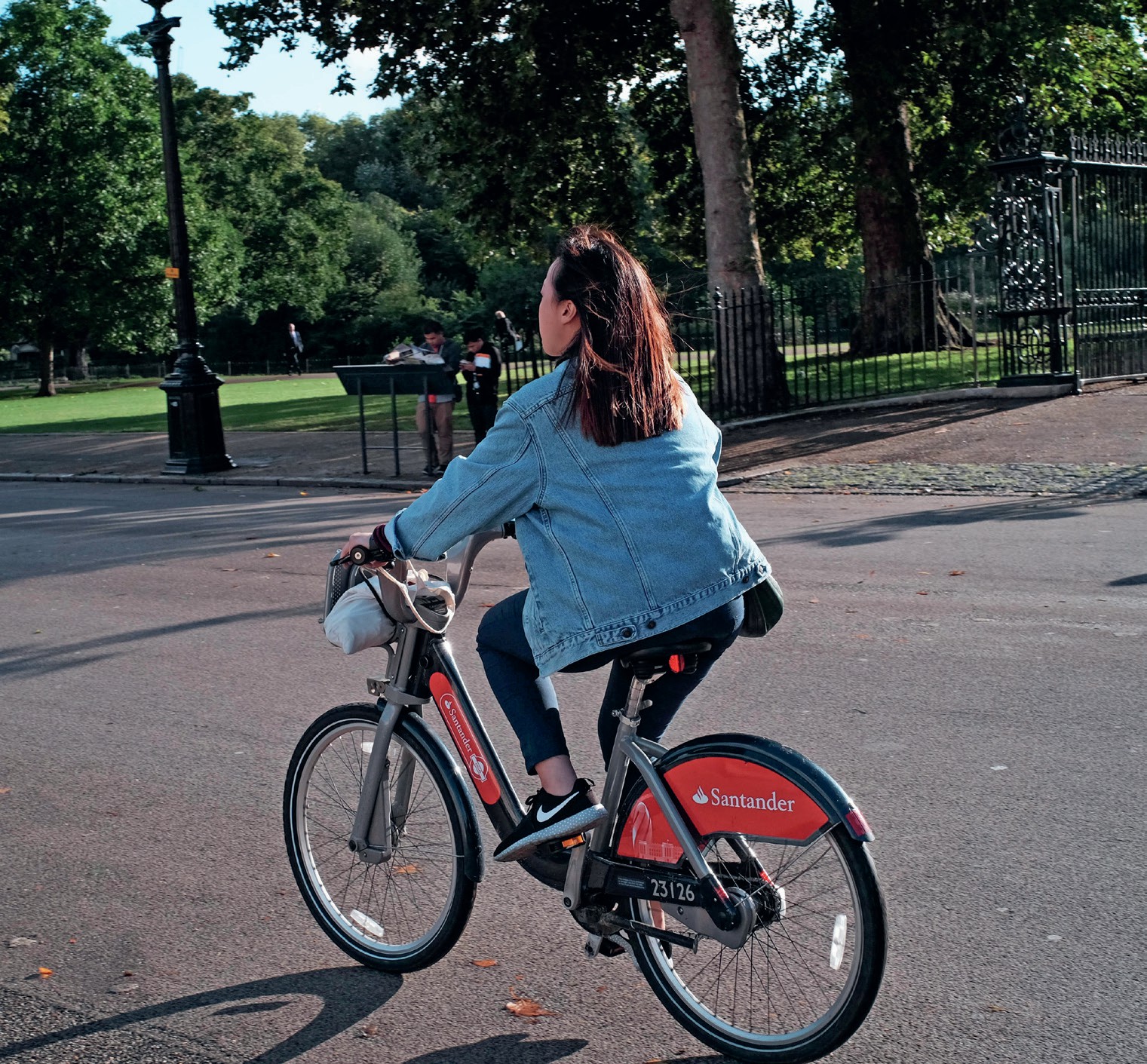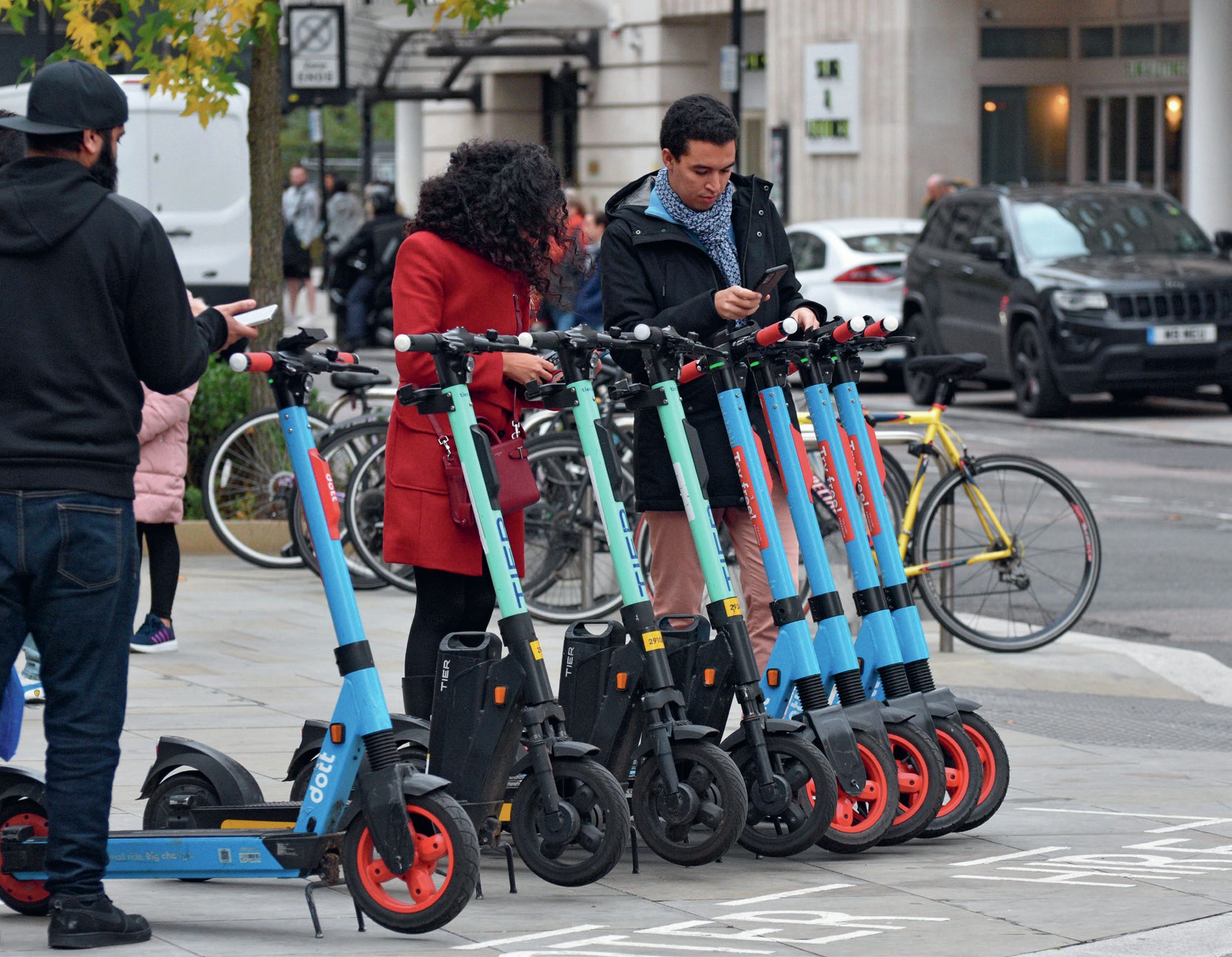case study
London’s transport solutions solutions
The journey to sustainability
This article offers an up-to-date summary of sustainable transport in London, and the measures that are being taken to move towards sustainable urban living. The aim is to reduce traffic congestion, and improve accessibility and air quality in the capital.
For any city to be successful in the twenty-first century, it is vital to have a fully functioning integrated transport system. This means combining several transport options to provide people with affordable, easy and efficient modes of travel that minimise journey times. An integrated transport network should cover a wide area and allow all parts of the city to be accessible. Integration means that a traveller can move seamlessly from one mode of transport to another so that it becomes more attractive to take public transport than to drive cars around the city.
Failing to tackle transport problems
Cities which fail to tackle their transport issues will inevitably experience economic costs as workers arrive late and deliveries are delayed, all of which costs businesses money. Cities with poor transport may also be unsuccessful in attracting foreign investment. Importantly, where sustainable transport options are not used, the health of residents can be significantly impacted through exposure to polluted air.
It has been predicted that congestion will cost London £9.3 billion annually by 2030 if nothing is done to reduce traffic. It is clear that a fully integrated transport network for the capital is vital. A number of solutions are being introduced, including hybrid buses, encouraging greater use of cycles and penalising drivers of vehicles which cause the most pollution. The Mayor of London, Sadiq Khan, has set a target of 80% of all journeys across London being on foot, bike or public transport by 2041. The vision is to provide a ‘seamless whole-journey experience’, using an integrated transport system which is far easier, cheaper and more convenient than cars.
Hybrid buses
Transport for London (TfL) has a fleet of 9,000 buses which now all comply with the low-emissions standard. To meet these new standards, emissions of nitrogen oxide have been reduced by up to 95%. In 2022, half the buses ran on biofuel and the rest used blends of diesel-electric or were fully electric, combining to deliver a 40% reduction in carbon dioxide emissions. A further 300 zero-emissions buses are set to join the fleet. These will help to improve air quality but also operate much more quietly and with considerably lower vibration levels, which can damage buildings.

In order for the bus network to work efficiently, many routes have their own dedicated bus lanes to speed up journeys and make them more attractive to people — rather than sitting in traffic jams in their own cars, people can zoom along bus lanes. In 2019–20, 2.09 billion trips were taken by bus — this represented a fall in use from previous years, but this can largely be attributed to reduced travel during the Covid-19 pandemic.
On your bike!
If you live in or have visited London, you may have noticed the improving infrastructure for cycling, and more cycle routes are being added, which means an additional 450 km in operation by 2024. The aim is for 70% of all Londoners to live within 400 metres of a cycle route. The rise in ownership of electric bikes means more people are thinking about cycling, and for longer distances, as these are quicker and require less effort to propel than traditional cycles. However, road safety must also be addressed as the dangers of sharing roads with motor vehicles can be a barrier for some people. TfL is working to improve safety at 73 notoriously dangerous junctions.

Santander bikes (originally known as ‘Boris Bikes’) are one of several cycle hire schemes in London and part of TfL’s sustainable transport options. There are 12,000 Santander bikes around the capital at 785 docking stations, which tend to be located close to major train and bus stations as well as tourist attractions, and are generally about 400 metres apart. Cycles are available to rent 24 hours a day and 1 million users were recorded in 2021. In September 2022, 500 electric cycles were added to the fleet.
However, there are complaints about the system. Due to the popularity of some docking station locations, customers must wait for someone to leave with a bike before they can dock theirs, meaning customers can exceed the 30-minute session and end up paying more as they can’t dock the bike. Many Londoners are keen to see cycle hire expanded, particularly beyond the city centre, but funding is difficult due to the high cost of the docking stations and bikes, so TfL will probably need to find another sponsor to enable future expansion.
Scooter hire
In addition to bike hire, e-scooter hire is being trialled in a number of London boroughs, including Camden, Tower Hamlets, and Kensington and Chelsea. To use them, you must download an app and use a QR code to unlock an e-scooter from their docking stations. These cost more to hire than cycles and you must ride in the bus lanes and not on pavements. GPS tracking systems are used to control their speed and disable them if riders take them to areas where they are not allowed. Currently, privately owned e-scooters cannot be legally ridden on public roads or pavements in the UK.
There are concerns around e-scooters, particularly around pedestrian safety and insurance, and TfL has banned carrying them on all forms of public transport. This means they cannot be taken onto a bus or tube, and thus they cannot be fully integrated with the transport network. However, many environmentalists think e-scooters are a good way to get people out of their cars and move London towards more sustainable transport. In future, restrictions on their use may be relaxed.

Reducing vehicle numbers
While the measures outlined here encourage people to use public transport, they are used in tandem with punitive strategies that aim to put people off driving vehicles in London.
For example, the Congestion Charge which Zone covers much of central London. The charge applies to drivers who travel within the zone between 7 a.m. and 6 p.m., with fines of £160 for non-payment. In the first few years, the scheme dramatically reduced the number of cars entering the city and public transport use increased. It was hailed a success as in the first year (2003) traffic congestion was reduced by 30% and traffic speeds in the city increased by 30%. It continues to be seen as successful at keeping vehicles out of central London and reducing air pollution.
The Ultra-Low Emissions Zone (ULEZ) was introduced in 2019 and covers a larger area than the Congestion Charge. The aim is to reduce air pollution by charging all vehicles that do not meet the emissions standards. The original central London ULEZ decreased nitrogen oxide emissions by 44% and it is hoped that the larger extended one, introduced in 2021, will continue to make a big difference. TfL is currently consulting on increasing the coverage of the ULEZ to include most of Greater London, reaching out to the M25, and if this is approved it will be implemented in August 2023.
Conclusion
A lot is happening in London to improve public transport and promote sustainable urban living. Most of these schemes aim to offer cheap, carbonneutral means of travel which are attractive, fast, and more efficient than driving. Charges and fines are designed to dissuade people from using their vehicles in the most congested areas. It will take investment and innovation to keep London moving but with the vision for 2041, they may well be on the right pathway.
Exam practice
Using a named example, examine how urban transport strategies can reduce traffic congestion. (9 marks)





